
Vol. 9, No. 1
November 2004
Built
Spaces.
The Cultural Shaping of Architectural
and Urban Spaces
 Vol. 9, No. 1 November 2004 |
Built
Spaces. |
| ___Alexandra
Staub Pennsylvania |
Public Face and Private
Space: The West German Single Family House in the Twentieth Century |
|
The
opening and closing of spaces – and the possibilities for actions and
interactions implied – are themes that have stayed current since the early
twentieth century. Openness and closure mean establishing the possibility
for or restricting access, either in a physical or a perceptive sense. This
article discusses the boundary between the public space of the city and the
private world of the home, or to be more exact, between the public street
and the single-family house located on it. How this space is defined, and
what types of actions are allowed those who use it help to determine how the
individual is integrated into the greater social order. Historical context The house as private refuge was a common theme in the nineteenth century, expressing an upper-class dichotomy between the harsh world of work and the sanctity of family life[1]. This view was not limited to Germany, but expressed the uncertainties of physical and social changes that came about with industrialization and early capitalism, the resulting demographic changes in the makeup of cities, and a polarization of gender roles[2]. In Germany, the insecurity of an industrializing society on occasion led critics to propose radical solutions: lamenting the supposed disintegration of the traditional family, some reformers pleaded for a return to the pre-industrial Dielenhaus as a spatial expression of an intact and cohesive society[3]. More specific to the German situation was an emphasis on separation between, and privacy for individual nuclear families[4]. The actual housing situation in Germany during the latter part of the nineteenth century saw numerous families having to share quarters with non-family members; a state of affairs that was most drastic in the poorer classes. In Berlin, for example, 63% of the smaller apartments (with less than three rooms) were considered “open” apartments in the first half of the nineteenth century, meaning that more than one family resided in them, or that a family took in night lodgers[5]. In large cities, the housing crisis and the tenement housing (Mietskasernen) plans facilitated this situation, as apartments could be divided again and again to take in tenants at the highest price the market would bear[6]. This situation, as well as the ensuing squalor, led a broad array of reformers to seek solutions to alleviate the situation. Despite their relative poverty, the working classes were pushed to adopt the moral values of the bourgeoisie, for example by limiting households to immediate members of a family[7]. As the social reformer Carl Hoffmann stated, the proper housing form would ensure that, “No one is too near another, every one may withdraw and be quietly in his own quarters, so that No One may have cause for complaint and the One does not become familiar with the affairs of Another”[8]. The detached, single-family house became the ideal in terms of these reforms, as it expressed complete separation of families from one another. Early attempts to provide the working class with such housing include company houses at the Saline Königsborn near Unna, a project dating from 1780[9]. Further such projects followed, culminating in the extensive estates and homesteads (Siedlungen) of the Weimar Republic and Third Reich[10]. In his textbook Wohnungs-Baukunde (Bürgerliche Baukunde) first published in 1898, with new editions in 1904 and 1910, Hans Issel described actual single-family houses of all sizes, giving an overview of the genre at that time. Both small houses for the working class, larger homes for the middle class, and villas for the bourgeoisie were included[11]. An analysis of the illustrations gives an idea of how far the idea of the separate family unit had advanced by this time. The smallest houses illustrated include those of the Arbeiterkolonie der Höchster Farbwerke[12], duplexes built by the Krupp Company in the Kolonie Alfredshof and Altenhof by Essen[13], and winning entries in a competition for working-class housing held by the city of Düsseldorf in the late 1800s[14]. Despite the small size of the houses, all of them included a small porch and entry hallway to provide a transition between the street and the living rooms of the house, and to increase privacy. From the hallway, doors led to the kitchen, living room, and a staircase to the upper-floor bedrooms. Duplexes were of a similar size as the detached houses, with the entrances to the two units on opposite sides of the building to increase the privacy of the units. Here, an entry porch either led into an entry hall or a large, combined living room and kitchen (Wohnküche). Larger houses shown by Issel followed the same ideas, using a more elaborate spatial configuration. The living rooms, which were at the front of the house, were part of a representative suite of day rooms, and the number of thresholds between the public sphere of the street and the living rooms was increased: a front door led to a small entry hall that led into a larger entry hall, and from here a series of doors led into the actual living rooms[15]. In yet larger houses, the second entry hall was furnished to be an anterior living room, and was then called a Diele. Its role as a circulation hub – a staircase led to the upper floors, doors led into the other living rooms, and often a hallway led to the service wing – made it the most public of the living rooms, and allowed for its function as a receiving and waiting room. Although Issel does not show it, surviving examples make clear that the larger, turn-of-the-century villas were generally surrounded by a garden. A fence and usually a gate marked the boundary to the street, providing a clear barrier for those not belonging to the household. Thus, the entry sequence began long before the front porch, and consisted of a gate at the sidewalk's edge, a walkway through the front yard, the entry porch, a first entry hall, a second entry hall, and finally, the living room or study. Around the turn of the century, various reformers’ efforts had thus been successful to the point that a new housing type for the working class seemed to have emerged: a “closed” house with a plan derived from upper class housing. Larger houses had a range of specialized rooms that were organized hierarchically according to gender, generation, and association with the family as member, servant, or guest. Because of their small size, working class houses could not have such a range of rooms, yet even here the separate entrances and vestibule made it possible for the working class to shield family life from public scrutiny. The interwar years saw a division of sorts, with more conservative houses retaining the floor plan types described above, while an experimental avant-garde planned houses that, through a separation of load bearing and non-bearing elements, were able to promote the use of a pronouncedly “open” floor plan[16]. Despite their very dissimilar appearances, both traditional and “modern” houses had similarities in their spatial organization. Both types of floor plans now typically had the kitchen facing the street, while the living room faced the back yard, providing direct access to this space. The back yard was thus articulated as an outdoor extension of the living room, while the front yard, if there was one, was decorative. On smaller plots of land the architect often maximized the back yard by moving the house close to the street, sometimes with a bit of Abstandsgrün (literally “distance-greenery”, or shrubs next to a building that are meant to keep people from directly approaching the façade), the name of which adequately explains its function. There were exceptions, of course. Projects designed for like-minded individuals could stress the camaraderie of the members by, for example, placing doorways next to one another and close to the sidewalk to encourage interaction, or by providing common green spaces within a block. This found its articulation in conservative communities such as the Gartenstadt Hellerau, built in 1908[17], or the SS Kameradschaftssiedlung Zehlendorf, built in 1937-9[18]. The former is a project near Dresden and an example of a suburban community whose entrance was marked by a portal, while the latter required admittance to one of the houses in order to access the common space across the back yards. While there were boundaries to keep strangers away from the properties, once inside, one was part of an “in-group” of neighbors. The separation of households was thus established in all classes during the first half of the twentieth century. With this step, control over privately owned space had become greater, so that further demarcation between the publicly owned space of the street and the privately owned space of the house and its yard could take place. In the following section I would like to follow the development of the single-family house and its relationship to the public space it borders from the postwar era on. In my analysis, I use two types of sources: plan and photo collections of houses from the second half of the twentieth century[19], and contemporary moving images[20] that allow an analysis of the relationship between architectural spaces and the actions that take place in them. The two types of sources taken together allow a definition of spaces and an analysis of their use. In this way it becomes possible to assess what role the environmental framework has in helping to determine the cultural meaning of encounters. The boundary between public and private in the early postwar era |
||||||||||||||||||
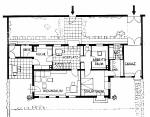 Image 1 Bruckmann, typical house plan  Image 2 Bruckmann, rear façade  Image 3 Schwab, house in Düsseldorf, street side  Image 4 Schwab, house in Düsseldorf, entry side 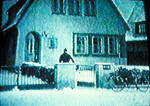 Image 5 Vergiß die Liebe nicht  Image 6 Witwer mit fünf Töchtern 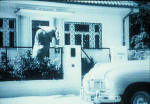 Image 7 Mutter sein dagegen sehr 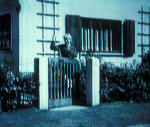 Image 8 Witwer mit fünf Töchtern 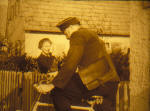 Image 9 Nachts auf den Straßen |
In a collection of house plans aimed at the prospective client, Bruckmann
(1954) provides a lengthy introduction in which the single-family house is
discussed according the social class of the occupant “and his family”, with
a list of rooms necessary when planning a house for each class[21].
The upper classes required a house for representation. Higher civil servants
and professionals required rooms for cultural activities. A doctor required
rooms for his practice. Businessmen required rooms where they could
entertain clients, separate from the rest of the household, especially from
areas where the children could be. Civil servants and employees required a
place to relax after work, here too, without being disturbed by the
children. Tradesmen were already considered part of the working class, and
for these the author recommended the traditional Wohnküche in lieu of
a separate living room. The listing makes clear that separation, especially
of children and adults, was an aim when planning the house. The exception
was the working class, where the smaller units required the family to make
do with one multifunctional room. Bruckmann's collection was aimed at a fairly affluent builder desiring a house whose basic appearance was derived from a German vernacular, with a steeply pitched roof, load-bearing exterior walls with small windows, and in some cases, wooden shutters. The plans were similar to conservative interwar plans, with the living room at the back, separated from the front door through one or two entry halls. The rooms were separated from one another through thick walls, and could be separately used. Bruckmann did provide information about the house's context, often including site plans and always photos of the houses. Tellingly, the latter were of the more welcoming rear façade, showing the back yard that was to be used as an extended living space. Where site information is given, almost all houses make use of some sort of barrier between the public street and the front yard, either through a fence, bushes, or a wall. (Images 1 and 2) Not all postwar plan collections were of vernacular-inspired houses, however. Authors such as Schwab (1962) showed collections continuing the traditions of the interwar avant-garde. The arrangement of the spaces was similar to the conservative postwar houses in that the kitchen was generally at the front and the living room faced the rear, with direct access to the back yard, yet the houses themselves took up a modern aesthetic, with simple lines, a flat or only slightly pitched roof, and an open floor plan with a great deal of transparency[22]. Despite the pronounced openness, however, views were carefully controlled. Instead of closed off entry spaces, privacy for the living rooms was created by changes in direction of approach, or by piano-noble, or split-level configurations, which suggested openness without actually allowing direct views into the living space. The open floor plan allowed the children of the family more freedom, as they now had easier access to the living room(s), but did not allow strangers easier access to family spaces. The entrances from the public street to the house itself were often as closed off as in the more conservative houses. Thus, gates, fences, and high walls or closed facades clearly marked the boundary to the house and served as a reminder of the private nature of the spaces within. (Images 3 and 4) The boundaries used in both the conservative and the modern house types of the early postwar era make it clear that the front yard – which one could often see from the street – already belonged to a private zone that one could only enter under certain conditions. How these were defined becomes visible when considering how these spaces are used in films. Service people, in this sense messengers or delivery people, could approach the house unaccompanied, as happens in an early morning scene in Vergiß die Liebe nicht (1953), in which a delivery man leaves rolls by the front door. In the modern house in the film Mein Vater der Schauspieler (1956) we see a man from the gas company enter the gate on his own to read the meter. If the gate to the front yard was closed, then visitors who did not belong to the household, or friends of the children could not pass this threshold without invitation, especially if the garden gate had a bell. This becomes obvious in a scene in Witwer mit fünf Töchtern (1957), where boyfriends of the two teenage girls wait on the sidewalk before the house for the girls to come out for a rendezvous. Since there is no bell at this gate (and thus we may assume the gate is not locked) the boys have to whistle to make their presence known. In the film Mutter sein dagegen sehr (1951), there is such a bell, which means that visitors are expected to wait on the public sidewalk until they are let in. A forthright suitor of the female protagonist breaks all rules of good conduct when he ignores the gate and leaps over the fence to approach the house. As an architect (in this sense, an artist) he seems to have some leeway, however, since he convinces her to marry him in the end. The garden gate is used as a threshold between private and public space not only when entering, but also when exiting the house. In traditional houses, certain guests are accompanied not just to the front door but to the garden gate, as happens several times in Witwer mit fünf Töchtern. In modern houses of the same era, they are generally accompanied to the front door only, perhaps because modern houses are generally placed closer to the street. The front gate is also a point of encounter. In a scene from Nachts auf den Straßen (1952) the wife stops here to chat with the letter carrier, with each remaining in their separate realms – she inside, he outside. (Images 5, 6, 7, 8, and 9) |
|||||||||||||||||
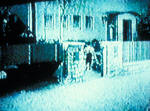 Image 10 Mein Vater der Schauspieler 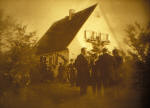 Image 11 Nachts auf den Straßen |
The front façades of the
houses have windows, though they are never used to establish contact with
someone standing before the house; for example, by opening the window and
calling out. In the modern houses there are few windows in the front façade;
here the house is clearly oriented towards the rear garden. (Image 10) The windows in the front façade of traditional houses are only used to observe what is happening in the street. Thus, in Vergiß die Liebe nicht, the husband sees that an admirer of his wife is approaching the house, and uses the rear terrace door to slip into the yard and thus avoid an encounter. This makes it clear that the rear façade, in contrast to the front façade, is informally permeable. In contrast to the front yard, the back yard is used for leisure activities. The children in Witwer play here, while in Nachts auf den Strassen the back yard is used for a large party. (Image 11) |
|||||||||||||||||
|
The 1970s: a time of change The 1970s marked societal transitions in Germany, several of which found expression through housing design. A survey of both architectural plan books and prefabricated house catalogs show that, whereas in the 1950s, children's spaces within the house tended to be very small – Mittag recommends children’s bedrooms of five to eight square meters per child, in contrast to the parent's bedroom where he recommends twelve to twenty[23]– by the 1970s, children's rooms had on the whole become much larger and were less frequently illustrated with more than one bed, and playrooms had become more common. There were other signs that family life was changing. Whereas authors such as Bruckmann (1954) had portrayed children as potentially disturbing, and had recommended spatially separating them from adults, by the 1970s the larger play areas and the more accessible living room spoke of a new family parity. Spaces such as the old German dining hallway (Essdiele) became popular once again, symbolizing, as they did, family Gemütlichkeit and togetherness. |
||||||||||||||||||
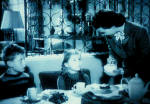 Image 12 Mutter sein dagegen sehr 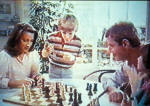 Image 13 Advertisement for Fruchtzwerge |
Two film scenes demonstrate the change. In Mutter sein dagegen sehr
(1951), a film in which children play a major role, the three adopted
orphans who are spending their first day in the new family drink hot
chocolate at the dining room table. The table is set formally, with a white
tablecloth and chinaware. The children are forced to behave like miniature
adults. When the little girl spills her cocoa on the tablecloth, her anguish
is understandably great. Despite the fact that the grownups (with exception
of the maid) react in a friendly manner, it remains that the living/dining
room is arranged to be an adult space, in which the children are guests. In
contrast to this, a television advertisement for Fruchtzwerge
yoghurts from 1984 shows a family in their living/dining room. The furniture
is stylish, yet with easy-to-clean surfaces. The parents are playing chess
while the children watch, and the son is standing and eating yoghurt,
despite the danger of spills in the fashionable interior. The easygoing
family atmosphere helps to define the living/dining room as a place where
the family gathers on an everyday basis. In this atmosphere, the children
are a natural part of the setting. (Images 12 and 13) |
|||||||||||||||||
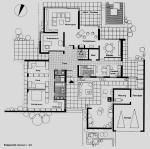 Image 14 Papenburg, plan  Image 15 Papenburg, entry façade |
By now, the open plan had become fashionable, as an expression of a more
informal way of life, with books such as the Deutsche Bauzeitschrift's
Offene Wohnformen documenting the trend[24].
Openness meant, above all, connections between the main living spaces in the
building, and arranged views, both within the building and between inside
and outside spaces. This use of space, which allowed light and air to flood
the house, gave the impression of grand spaciousness, and was a new form of
luxury in contemporary living. The controlled openness of the house's interior contrasted sharply with the boundary between the family home and the public street. Indoor-outdoor living only took place where the outdoor was an extension of the private living area. By contrast, façades between the street and the house were almost exaggeratedly closed, to suggest the seclusion and privacy of family life within. A few examples taken from Offene Wohnformen serve to illustrate this tendency. A house in Papenburg by Münster[25] shows stark brick façades on the entry side, with the entrance itself deeply set back between a bedroom and a garden wall. The room-high barrier that surrounds the property makes the house into a fortress, while a play of rectangular volumes (flower beds and a wall around a small courtyard), create a transition between the street and the house and draw attention away from the entrance and the few windows located in the front façade. The only large windows of this house are in the rear façade, facing the garden, where floor-to-ceiling glass provides a link between the living room and the back yard. In contrast to the closed off exterior, the interior seems almost relaxed. The concrete frame construction is filled in with brick here as well, but many openings in this system create a flowing and spacious interior. (Images 14 and 15) |
|||||||||||||||||
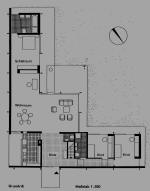 Image 16 Senne, plan  Image 17 Senne, rear façade |
A flat-roofed Miesian type in
Senne[26]
also makes use of large expanses of glass towards the back yard. Views from
the living room are limited to the property itself, while the street side of
the house has no windows. The idea of a freestanding glass pavilion, open to
all sides, such as was developed by Mies van der Rohe in the Farnsworth
House, is only half realized. Here, the impression of a floating roof slab
over a space that is hardly contained is only to be had from the rear. From
the front, the building appears to be a closed box. (Images 16 and 17) |
|||||||||||||||||
 Image 18 Münster, plan  Image 19 Münster, entry to house |
A house in Münster[27]
makes the entry façade more vibrant through a play of volumes, although
again there are no windows, and even the front door is made of textured
glass to allow no view in. Here, too, the back of the house has
floor-to-ceiling windows, while the front has massive walls to separate the
house from the street. (Images 18 and 19) |
|||||||||||||||||
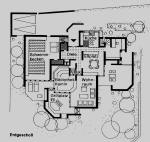 Image 20 Düsseldorf, plan 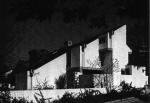 Image 21 Düsseldorf, street façade  Image 22 Düsseldorf, view from the living room to the barbecue pit |
And finally, a house in
Düsseldorf[28]
shows a blind façade to the street, with a garden wall at the edge of the
property. The interior consists of a series of interlocking volumes that
include outside areas such as the barbecue pit. By leaving away many of the
interior walls the architect has created a flowing and generously
proportioned space, yet the views offered are carefully arranged to provide
a feeling of spatial expanse, without ever having to look onto a public
space. It is not only impossible to see from the street into the house, but
in the other direction as well. In this example, the house has become akin
to a cocoon. (Images 20, 21, and 22) |
|||||||||||||||||
 Image 23 Die Verlorene Ehre der Katharina Blum  Image 24 Die Verlorene Ehre der Katharina Blum |
In the film Die Verlorene Ehre der Katharina Blum (1975), the
contemporary house of the Blornas clearly shows the contrast between
interior and exterior. The house is designed in a brutalist style, with an
angular concrete core from which a windowless brick tower thrusts skyward.
The wings of the house are also of brick and have no windows to the front. A
paved driveway and a small strip of lawn make up the front yard, with garden
lamps in the form of stark beams reminiscent of a fence. There is a strip of
windows on the ground floor, yet they are cut so deeply into the façade that
the impression they leave is one of dark holes. If the outside seems foreboding and defensive, the inside is quite the opposite, sophisticated and airy, with an influx of light. The kitchen is by the front door, completely removed from the living room, and with a door to the vestibule. This arrangement allows a housekeeper, in this case Katharina, to see when visitors approach the house and then to let them in. In the film, the owners return from a vacation and are drinking coffee in the kitchen as a family friend drives up. The husband lets in the visitor, but does not return to the kitchen. The kitchen, being a service room, is meant to be out of sight. Further events take place in the living room. The husband lets the visitor into this space and then closes the door to the vestibule behind them. From the living room, one has a view of the indoor swimming pool and the verdant back yard. The actions show what the outside of the house implies: the front of the house is a service zone to be passed quickly on one’s way to the more pleasant living areas. The relationship between inside and outside is established in this posterior space. The house turns its back to the street, and communicates openly only with the private realm that is behind it. (Images 23 and 24) |
|||||||||||||||||
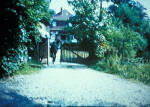 Image 25 Wenn süß das Mondlicht auf den Hügeln schläft  Image 26 Wenn süß das Mondlicht auf den Hügeln schläft |
A “return to nature” in the form of country living also became popular
during the 1970s[29].
City residents left the bustle of urban life and withdrew into newly
rediscovered rural settings, or built houses adapted from rural types.
Examples can be found in professional journals or picture-and-plan books,
such as the book Einfamilenhäuser (1982)[30].
Here, a house in the village Hallau[31],
while architect designed and contemporary in its organization, adapts many
rural vernacular elements, such as a Schopf and Vorraum, to
make it blend in with the surrounding farmhouses. In films, the spatial quality of such rural surroundings becomes apparent. Privacy and seclusion, but at the same time unconfined space determine this housing form. In Wenn süß das Mondlicht auf den Hügeln schläft (1969), a family from the city lives in a modernized, half-timber farmhouse with various outbuildings. The grounds are completely secluded, yet a gate additionally separates them from the outside world. The film events are spread out over the grounds, and when a person suddenly appears in a scene, the effect is always a bit unexpected or startling, with coincidental meetings taking on the character of a happening. (Images 25 and 26) |
|||||||||||||||||
|
Living in a private space – Fences, shrubs or walls between the public street and the property, – Front facades that were closed, with either no fenestration, windows limited to spaces such as the guest toilet, or windows covered by iron grilles, – Secondary rooms in the front façade, such as garages, kitchens, utility rooms, or a child's bedroom, – Entries that were not on the main floor of the house, – Entries that required a visitor to change direction, thus opening the view only once the visitor had been allowed to enter the house.
In this manner, stretches
of single-family houses became worlds unto themselves, with a common urban
life difficult at best. |
||||||||||||||||||
 Image 27 Männer 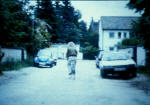 Image 28 Männer 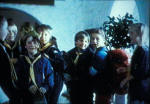 Image 29 Männer |
Film excerpts taken from the 1985 film Männer show how the interior
of the house is spatially articulated, while the front façade and the
street, which together form the public space before the house, have become
relatively insignificant. The film also shows how conventions associated
with approaching and entering the house have changed over time, especially
with regards to the role of the children. From the front, the Armbrust house is indecisive and almost faceless. Semicircular steps, a pair of flowerpots, and an arched doorway draw attention to the entrance, yet the windows are hidden behind iron grilles (Ziergitter) that act as a protective element. A plank fence marks the edge of the property, yet there is no gate, and the house is almost at the street’s edge. The front of the house is thus architecturally ambivalent: on the one hand the heightened entry situation, proximity to the street, and missing gate invite the visitor to approach the house, on the other hand, the front façade has been designed to be so banal, that one is hardly tempted to do so. The space before the house is almost barren: there are no sidewalks, high walls surround the properties, and cars are parked directly next to the walls. With no space for pedestrians, the street has mutated into a circulation route for automobiles. The inside of the house is more daring. A gallery is located at the edge of the two-story living room and lends an air of generous spaciousness. The furnishings are contemporary and tasteful, while details such as a fireplace that looks as if it is made of adobe, evoke the American Southwest and lend an air of worldly sophistication to the occupants. In one scene, Mr. Armbrust hides in the back yard, from where he observes his wife and her lover through the large glass windows of the living room. The full architectural effect of the house’s interior is visible from this vantage point, as the living room is visually open to the back yard. When he returns to the street, Mr. Armbrust uses a path behind the house that leads through a tool shed and the garage. A further scene shows how people who are not members of the family use this rear path to access the house. The two children of the family are in the living room, waiting for a group of scouts to come pick them up. Their parents are still at the breakfast table when the terrace door swings open and a hoard of children in scouting uniforms piles into the living room. Here it becomes clear that access to the house has become less formalized, especially for the children. Whereas friends of the children in the 1957 film Witwer mit fünf Töchtern had to wait on the sidewalk because they were not allowed in the house, thirty years later customs had changed so much that children could approach and enter the house on their own, with little regard for formalities. Architecturally, the house continued to express a boundary between the family realm and that of strangers, yet it is evident that family life had become opener and more democratic, with the children afforded rights that they previously did not have. (Images 27, 28, and 29) |
|||||||||||||||||
|
The lack of spatial communication between the private interior of the house
and public street remains, however and comes hand in hand with two others:
the increased control and surveillance of public spaces, and the increase in
virtual spaces of all kinds.
Texts cited:
Films discussed:
Endnotes: [1] See Saldern (1997), 145-332. In Germany, the separation between a public and a private, family sphere has gone hand in hand with an ambivalent attitude towards the urbanization process. See Reulecke (1985), 139 ff. [2] In the United States, for example, Victorian society of the 19th century became strongly codified, as the home became an expression of private, family life. See Clark (1986), 72-130. [3] Brönner (1987), 29. [4] See Fehl (1987). [5] Schlafgänger, or lodgers who rented only a bed. Fehl (1987), 127, endnote 4. [6] Fehl (1987), 98. [7] Fehl (1987), 106-111. [8] “Keiner kommt dem anderen zu nahe, ein jeder zieht sich von den anderen zurück und verhält sich ruhig in seiner Wohnung, damit sich Niemand beklagen kann und Einer vom Anderen nichts erfährt." Hoffmann (1852) cited in Fehl (1987), 110. [9] Führ/Stemmrich (1985), 67. [10] See Harlander et al. (1988) and Harlander/Fehl (1986). [11] Issel (1910). [12] Architect H. Kutt; Issel (1910), 5. [13] Issel (1910), Table 1 and p. 9. [14] Issel (1910), 12. [15] Issel (1910), 30. [16] This essay is not an attempt to define the term “open” in the architectural discourse. I use the expression here as it is commonly used by architects to mean “flowing space” or “transparency” in the sense of Rowe et al. (1997). [17] Documented in Führ (1985), 136-7. [18] Documented in Führ (1985), 154-5. [19] Such books are meant for the architect in search of ideas as well as the interested layperson. Few of them show works by famous architects, rather they present solid but somewhat commonplace examples of contemporary architecture. For this study I analyzed the buildings contained in sixteen such books from 1950-1990, with a total of over 800 houses. [20] For this study I examined over 50 West German feature-length films from 1950-1989 that were set in single-family houses. [21] The introduction (without pagination) was written by Guido Harbers. Bruckmann (1954). [22] I use the word “transparency” here in the sense of Rowe et al. (1997). [23] Mittag (1957), 8. [24] Nagel and Linke (1976). [25] Architects Detmar Buckenbrede and A. Pohl, Münster; without year. [26] Architect Gregor Wannenmacher, Bielefeld; without year. [27] Architect Harald Deilmann, Münster; without year. [28] Architect H. Kalenborn, Düsseldorf, without year. [29] See Weber-Kellermann (1991), 533. [30] Peters/Henn (1982). [31] Architect Peter Bänziger, Hallau, without year. [32] Hafer (1990). [33] Architect Christa Lotze, 1989. [34] “Pflanzen innen und außen und kleinteilige Fenstergliederung bieten Transparenz und gleichzeitig reduzierte Einblicksmöglichkeiten.” Hafer (1990), 23. [35] “Wichtig in diesem Haus sind … der direkte Blick durch die Innenverglasung vom Windfang (aber erst nachdem der Besucher eingetreten ist) bis in den Garten.“ Hafer (1990), 29. [36] “Sie ist der Schauplatz derer, die den stetig Gesuchten nicht suchen noch finden, und darum gleichsam im Raume an sich zu Gaste sind, im Raume, der sie umfängt und diesem Umfangen allein zugeeignet ist.“ Kracauer (1963), 160; translation taken from Kracauer (1995). [37] Meyrowitz (1985). [38] Alperstein (1991).
|
||||||||||||||||||
|
|
||||||||||||||||||
| feedback | ||||||||||||||||||